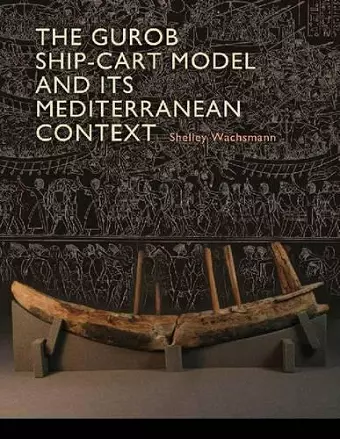The Gurob Ship-Cart Model and Its Mediterranean Context
Format:Hardback
Publisher:Texas A & M University Press
Published:30th Jan '13
Currently unavailable, our supplier has not provided us a restock date

When Shelley Wachsmann began his analysis of the small ship model excavated by assistants of famed Egyptologist W. M. F. Petrie in Gurob, Egypt, in 1920, he expected to produce a brief monograph that would shed light on the model and the ship type that it represented. Instead, Wachsmann discovered that the model held clues to the identities and cultures of the enigmatic Sea Peoples, to the religious practices of ancient Egypt and Greece, and to the oared ships used by the Bronze Age Mycenaean Greeks.
Although found in Egypt, the prototype of the Gurob model was clearly an Aegean-style galley of a type used by both the Mycenaeans and the Sea Peoples. The model is the most detailed representation presently known of this vessel type, which played a major role in changing the course of world history. Contemporaneous textual evidence for Sherden—one of the Sea Peoples—settled in the region suggests that the model may be patterned after a galley of that culture. Bearing a typical Helladic bird-head decoration topping the stempost, with holes along the sheer strakes confirming the use of stanchions, the model was found with four wheels and other evidence for a wagon-like support structure, connecting it with European cultic prototypes.
The online resources that accompany the book illustrate Wachsmann’s research and analysis. They include 3D interactive models that allow readers to examine the Gurob model on their computers as if held in the hand, both in its present state and in two hypothetical reconstructions. The online component also contains high-resolution color photos of the model, maps and satellite photos of the site, and other related materials. Offering a wide range of insights and evidence for linkages among ancient Mediterranean peoples and traditions, The Gurob Ship-Cart Model and Its Mediterranean Context presents an invaluable asset for anyone interested in the complexities of cultural change in the eastern Mediterranean at the end of the Bronze Age and the beginning of the Iron Age.
"Dr. Wachsmann has made some brilliant discoveries based on very careful research and is to be commended on a real tour de force."--Dr. Peter Lacovara, senior curator of Ancient Egyptian, Nubian and Near Eastern Art at the Michael C. Carlos Museum Emory University
|"The Gurob Model is a unique artifact, highly important for the light it sheds on ancient ship design in the eastern Mediterranean. Up to now it has received only passing mention in books and articles. It deserves a book of its own...an authoritative and detailed description of the ship model...This book will be the first in its field. There is no other book on the subject of the Gurob boat model."--John R. Hale, director of Liberal Studies at the University of Louisville
|"Shelley Wachsmann is one of the world's leading experts in maritime archaeology. He effortlessly combines deep knowledge of subject with a wonderful ability to explain this complex topic to both professionals and to the general reader."--Gil J. Stein, professor of Near Eastern Archaeology and director of the Oriental Institute of the University of Chicago
|"This richly textured book about a remarkable find of a wooden ship model on wheels from Egypt becomes the starting point for a tour de force into the decades of turmoil during the period of the Sea Peoples in the East Mediterranean. Wachsmann convincingly reconstructs the historical context of the Gurob model as belonging to the Sherden and Weshesh - Sea-Peoples of Urnfield origin that settled in Egypt and quickly became assimilated."--Kristian Kristiansen, professor of archaeology at University of Gothenburg, Sweden; Bronze Age researcher; co-author of The Rise of Bronze Age Society (Cambridge University Press, 2005)
ISBN: 9781603444293
Dimensions: unknown
Weight: 1400g
352 pages